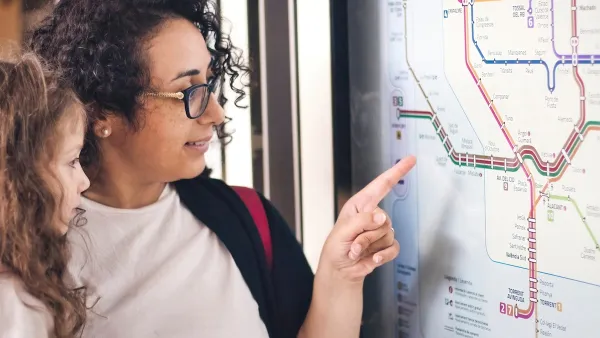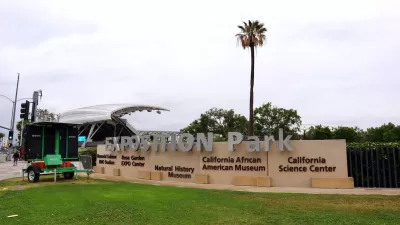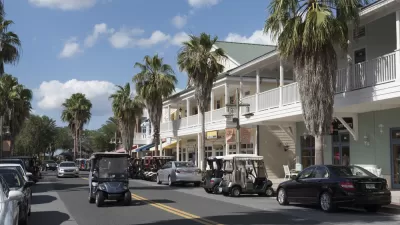Long abused by those who favor more urban settings, the suburbs of major metropolitan areas should receive more credit for their cultural capital, according to this article written for Zócalo Public Square.
Emily Goulding-Oliveira pens an appreciation for "the edgy outskirts" of large metropolitan areas. In this case, she's writing about the suburban areas of Los Angeles and São Paulo. "These flat, temperate, nearly endless expanses of homes are new, are growing, and are housing the future," writes Goulding-Oliveira.
Pushing back on the idea that suburbs are bland or even dangerous throughout the piece, Goulding-Oliveira expands on her core argument:
Globally, city outskirts are considered dangerous places and here in the U.S., with the luxury condos being built in American inner cities, poverty is increasingly appearing on the fringes. As a double citizen of these suburbs—by childhood in Temple City and by marriage in Hortolândia—I have a more sweeping and more positive view. For me, the fact that these places are vira-latas, places that flip realities, is a sign of their strength.
To the surprise of some, suburbs can also be a place that generates a great deal of the cultural trappings later co-opted in more urban areas. Goulding-Oliveira lists the recent cultural imports that can be traced to the suburbs
Most of what we call the new urban culture, from the U.S. to Brazil, is really suburban culture. The trendy food eaten in downtown L.A. or downtown São Paulo is the food developed on the outskirts: ramen burritos, fried eggs in soup, arroz e feijao, spam tacos, yucca fries. In sprawling megalopolises like Paris and our hometowns, suburbs are often where you can find the most interesting graffiti and music. Suburbs are—away from the gentrified core of these cities—where many young people and ethnic minorities are. In the suburbs, the rent isn’t too high, but the possibilities can seem endless.
FULL STORY: You Can Thank the Suburbs for the Trendy Ramen Burritos Downtown

Planetizen Federal Action Tracker
A weekly monitor of how Trump’s orders and actions are impacting planners and planning in America.

San Francisco's School District Spent $105M To Build Affordable Housing for Teachers — And That's Just the Beginning
SFUSD joins a growing list of school districts using their land holdings to address housing affordability challenges faced by their own employees.

Can We Please Give Communities the Design They Deserve?
Often an afterthought, graphic design impacts everything from how we navigate a city to how we feel about it. One designer argues: the people deserve better.

The EV “Charging Divide” Plaguing Rural America
With “the deck stacked” against rural areas, will the great electric American road trip ever be a reality?

Judge Halts Brooklyn Bike Lane Removal
Lawyers must prove the city was not acting “arbitrarily, capriciously, and illegally” in ordering the hasty removal.

Engineers Gave America's Roads an Almost Failing Grade — Why Aren't We Fixing Them?
With over a trillion dollars spent on roads that are still falling apart, advocates propose a new “fix it first” framework.
Urban Design for Planners 1: Software Tools
This six-course series explores essential urban design concepts using open source software and equips planners with the tools they need to participate fully in the urban design process.
Planning for Universal Design
Learn the tools for implementing Universal Design in planning regulations.
Borough of Carlisle
Smith Gee Studio
City of Camden Redevelopment Agency
City of Astoria
Transportation Research & Education Center (TREC) at Portland State University
City of Camden Redevelopment Agency
Municipality of Princeton (NJ)





























